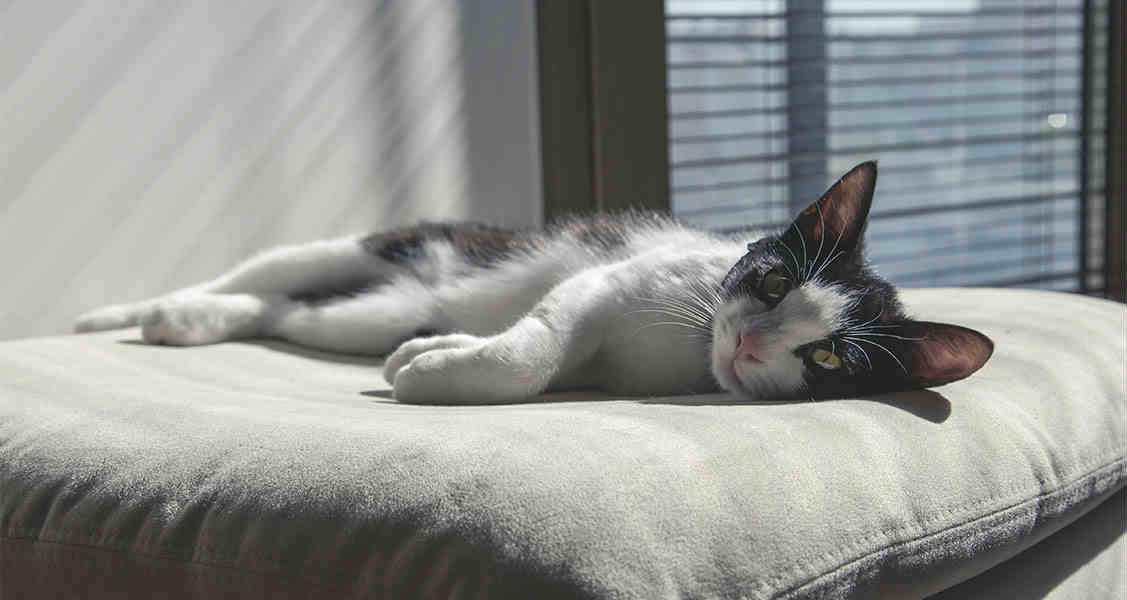9 Signs That Your Cat May Be Sick
By: Jody Smith | Reviewed by Dr. Clayton Greenway, B.Sc., DVM | Jul 14, 2017

Cats tend not to show indications of illness until they are good and sick. If your cat is displaying a marked change from her usual routine, keep an eye out for signs that suggest she might be ill.
1) Appetite Changes
If your cat is eating less, she could have liver disease or some type of infection. If she is losing weight for no apparent reason, she could have diabetes, GI tract cancer or hyperthyroidism.
It can take only a couple of days of not eating for a cat to develop a fatty liver which can result in liver failure. Take your cat to the vet immediately.
2) Bowel Issues
If the time your cat is spending in the litter box is much more frequent, or conversely if it is much less, consider the possibility that there may be a health concern. And if you see blood in your cat’s stool, see the veterinarian right away.
3) Extreme Thirst/Appetite
If your cat has become unusually thirsty, you may be seeing diabetes. Other symptoms can include frequent attempts, successful or otherwise, to urinate along with a bigger-than-normal appetite and weight loss with no apparent cause.
4) Bad Breath/Bleeding Gums
Bleeding gums in cats as well as in humans, is the earliest stage of periodontitis. This is the most common type of dental disease in cats. Plaque, which becomes tartar, is the cause.
You might notice bad breath and reddened gums. Your cat may have trouble eating. When left untreated, gingivitis bacteria can damage other organs such as the kidneys.
A dental cleaning, possibly with an antibiotic prescription if the condition warrants it, will handle the gingivitis. Frequent brushing will help prevent tartar buildup between cleanings.
5) Itchiness and Hair Loss
Is your cat licking or scratching more than usual? Is he losing an inordinate amount of fur? Thyroid disease may be indicated if your cat is doing noticeably more or less grooming.
Infestations of ear mites, fleas and ticks can stir up itchy skin and loss of fur. You may notice brown, crumbly discharge coming from your cat’s ears.
Other possible causes are fungal, staph and yeast infections or endocrine problems.
6) Sneezing/Congestion
These can be signs of a respiratory infection that affects your cat’s nose, sinuses and throat. You might see congestion, diminished appetite, fever, nasal discharge, rapid breathing and a runny nose. Treatment usually involves antibiotics and plenty of fluids.
Frequent sneezing and itchiness may also be a sign of allergies.
7) Urinary Issues
A change in the amount of urination is noteworthy. Less frequent or difficulty urinating, could indicate bladder stones or a urinary tract infection. You may notice blood in your cat’s urine, or your cat may suddenly stop using the litterbox.
There are several possible causes for UTIs, such as bacterial infection, cystitis, and not drinking enough water. A prescription can take care of the infection after about 10 days. A healthy diet that includes moist food will help your cat to avoid UTIs. Cats have a low thirst drive and will not drink as much water as they need when fed only dry food.
Adrenal gland disease, kidney disease or liver disease can also cause an increase in urination.
8) Vomiting
Blood in vomit can indicate that your cat has gastrointestinal issues, such as a gastric ulcer. Or it may mean that your cat swallowed something that didn’t agree with him. Parasites like giardia, hookworms, roundworms or whipworms can also cause this symptom.
Lots of vomiting can suggest the presence of various health conditions including heartworm.
9) Bloated Abdomen/Diarrhea
Roundworms, contracted from eating bugs or animals that are infected, start out in your cat’s intestines and can hit her organs and bloodstream from there. A cat with roundworms can have diarrhea, bloated abdomen, dull fur, little appetite and strings like spaghetti in vomit or feces. A severe case in a kitten can be fatal.
A tapeworm infection starts when your cat eats a flea that has eaten tapeworm eggs. Weight loss and moderate diarrhea will result. Tapeworm can be identified by what looks like rice in the feces and around the anus.
Both roundworm and tapeworm can be treated with oral dewormers. If you can keep your cat indoors, that will help prevent the problem.


Disclaimer: healthcareforpets.com and its team of veterinarians and clinicians do not endorse any products, services, or recommended advice. All advice presented by our veterinarians, clinicians, tools, resources, etc is not meant to replace a regular physical exam and consultation with your primary veterinarian or other clinicians. We always encourage you to seek medical advice from your regular veterinarian.

